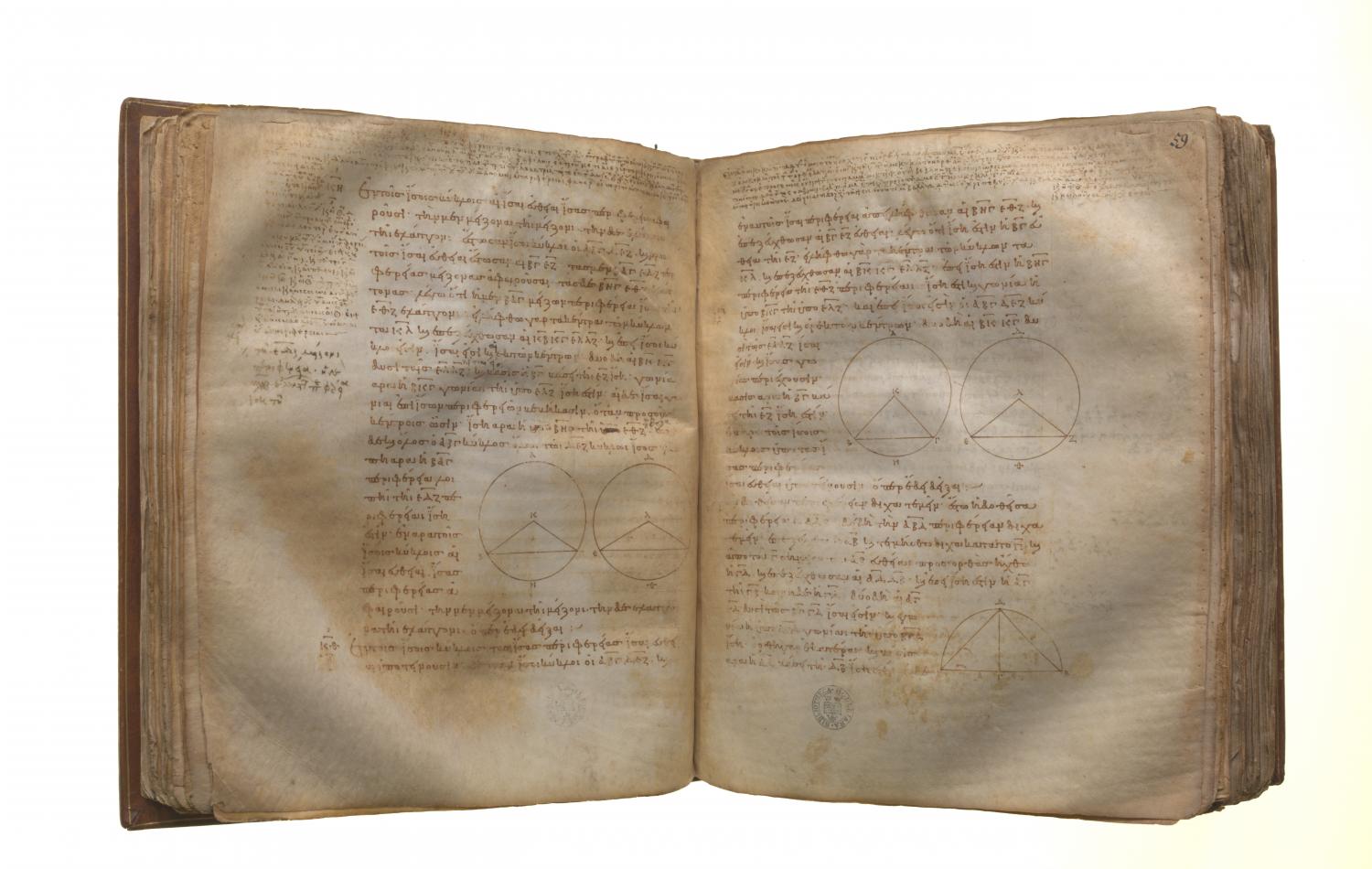Translations
Ἐν τοῖς ἴσοις κύκλοις τὰς ἴσας περιφερείας ἴσαι εὐθεῖαι ὑποτείνουσιν. Ἔστωσαν ἴσοι κύκλοι οἱ ΑΒΓ, ΔΕΖ, καὶ ἐν αὐτοῖς ἴσαι περιφέρειαι ἀπειλήφθωσαν αἱ ΒΗΓ, ΕΘΖ, καὶ ἐπεζεύχθωσαν αἱ ΒΓ, ΕΖ εὐθεῖαι: λέγω, ὅτι ἴση ἐστὶν ἡ ΒΓ τῇ ΕΖ. Εἰλήφθω γὰρ τὰ κέντρα τῶν κύκλων, καὶ ἔστω τὰ Κ, Λ, καὶ ἐπεζεύχθωσαν αἱ ΒΚ, ΚΓ, ΕΛ, ΛΖ. Καὶ ἐπεὶ ἴση ἐστὶν ἡ ΒΗΓ περιφέρεια τῇ ΕΘΖ περιφερείᾳ, ἴση ἐστὶ καὶ γωνία ἡ ὑπὸ ΒΚΓ τῇ ὑπὸ ΕΛΖ. καὶ ἐπεὶ ἴσοι εἰσὶν οἱ ΑΒΓ, ΔΕΖ κύκλοι, ἴσαι εἰσὶ καὶ αἱ ἐκ τῶν κέντρων: δύο δὴ αἱ ΒΚ, ΚΓ δυσὶ ταῖς ΕΛ, ΛΖ ἴσαι εἰσίν: καὶ γωνίας ἴσας περιέχουσιν: βάσις ἄρα ἡ ΒΓ βάσει τῇ ΕΖ ἴση ἐστίν. Ἐν ἄρα τοῖς ἴσοις κύκλοις τὰς ἴσας περιφερείας ἴσαι εὐθεῖαι ὑποτείνουσιν: ὅπερ ἔδει δεῖξαι.
In equal circles equal circumferences are subtended by equal straight lines. Let ABC, DEF be equal circles, and in them let equal circumferences BGC, EHF be cut off; and let the straight lines BC, EF be joined; I say that BC is equal to EF. For let the centres of the circles be taken, and let them be K, L; let BK, KC, EL, LF be joined. Now, since the circumference BGC is equal to the circumference EHF, the angle BKC is also equal to the angle ELF. [III. 27] And, since the circles ABC, DEF are equal, the radii are also equal; therefore the two sides BK, KC are equal to the two sides EL, LF; and they contain equal angles; therefore the base BC is equal to the base EF. [I. 4]
